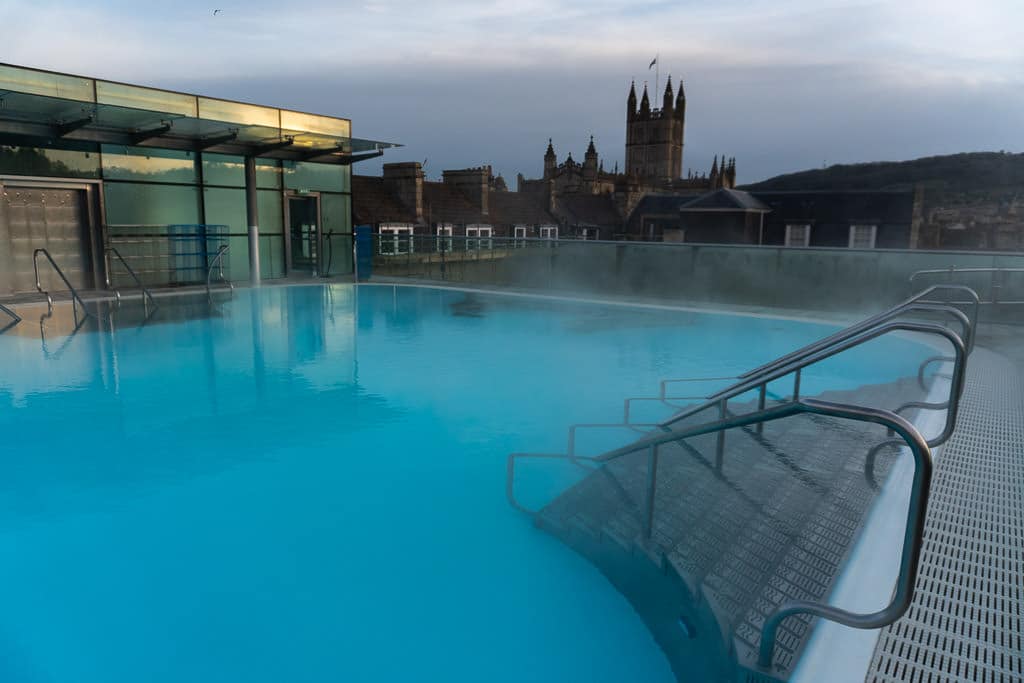As we soaked on the rooftop pool of the gorgeous Thermae Spa, admiring the early-morning views of the historic city below, I couldn't help but appreciate that the waters we were enjoying were from the same hot spring used by the Celts and Romans more than two thousand years ago!
We were quite literally immersed in history in Bath – one of the most famous UNESCO World Heritage Sites in the United Kingdom … and the world.
But, these waters weren't the only reason we found Bath so interesting. And they were only part of the reason the city was deemed to have ‘outstanding universal value' by UNESCO.
Its wonderfully preserved Roman remains, Georgian history, and Neo-classical architecture all combine to create an unforgettable atmosphere. But, this can all be easily overlooked without making a point to seek out the interesting and, often funny, stories of Bath.
1. Take a Bus Tour for an Intro to the History of Bath, England
While the city of Bath is very walkable, visiting in January meant chill-you-to-the-bones wind and low temps. Luckily, the Hop-On-Hop-Off Bus was an easy way to admire the views, learn more about the city, and get some fresh air without having to be out in the elements. With the sun out and a big windshield to block the wind, it was even enjoyable to sit on the open top area of the bus!
Since we had plenty of time to explore, we decided to take both of the bus routes in order to get to enjoy the surrounding landscape as well as the city center. Each was about one hour each and since it was off-season, the buses were far from crowded.

Full pdf of routes available here.
Skyline Tour
Wanting to see the beautiful Prior Park area, but not wanting to make the trek to that side of town? This tour was the perfect way to take in the views and not have to put any more miles on our shoes. Had it been the weekend when the park is open, we definitely would have hopped out to explore. But, even just getting to enjoy the scenery was really nice.
We were able to listen to some interesting facts with the free earbuds they gave us. We learned that famous author and former resident, Jane Austen really wasn't a fan of this area and was excited to leave. Also, beautiful Prior Park is one of the only 18th-century pleasure gardens still open to the public.
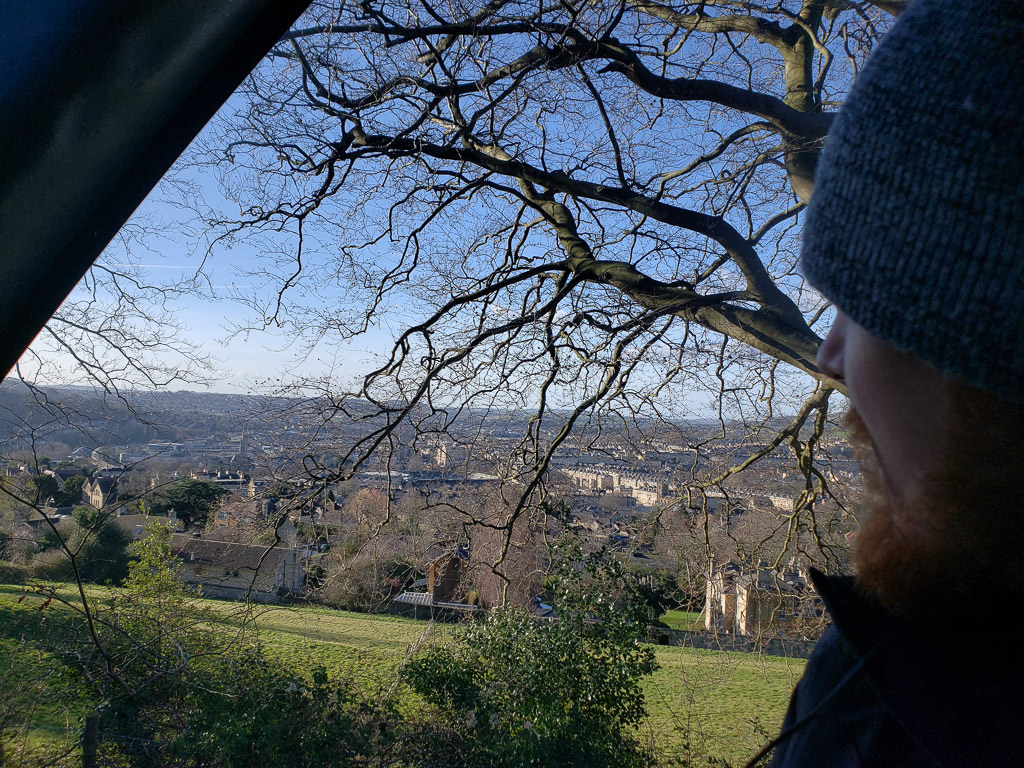
City Tour
After a leisurely ride up the hill and back, we hopped on the other bus that tours the city center late in the day. So, we were the only people there – which meant we lucked out with our own personal guide. We really enjoyed this in-person, very theatrical lesson on the city's rich history.
As we drove by the Roman Baths, Jane Austen Centre, No. 1 Royal Crescent, Circus, and Bath Abbey, our entertaining new friend shared all sorts of hilarious nuggets of history.
His first interesting nugget was actually related to current events. Apparently, a project to add under-floor heating in the Bath Abbey has led to multiple new discoveries since Bath still has many interesting artifacts hiding beneath the ground – dating back to Roman and even before-Christ times. So fun!
A Look Back at Bath
While its Roman history is very popular, Bath is also famous for its Georgian period where it was made to be a place for those who enjoyed a good party. Well-loved socialite Beau Nash apparently loved gambling, drinking, and chasing women, so he set out to make Bath a fashionable, resort-type town.
Luckily, he also loved architecture and had the talent of two generations of John Woods to help make the city gorgeous. However, as we found out, they actually only created impressive fronts to the buildings – with the insides and backs lacking the same impressive attention to detail.
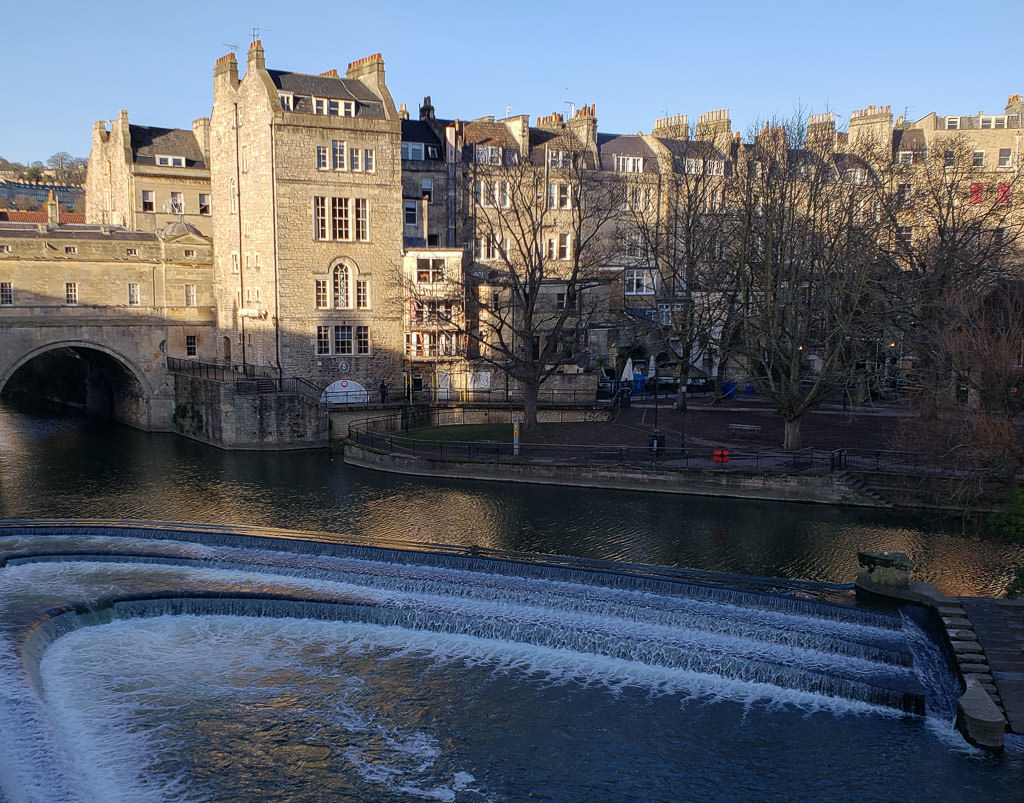
Apparently, Queen Victoria despised Bath as well. Apparently, someone made fun of her ankles during her first visit as a young girl, so she purposefully avoided it forevermore. Our guide pointed out that you won't see images of her with her ankles showing. That memory must have definitely stuck with her!
We can't vouch for what Bath was like that in prior centuries. But we loved the unique mix of Roman, Georgian, and modern history that made this city a fun and interesting destination outside London. Plus, it is a spa town. And we love us a good spa day!
2. Touring The Roman Baths – Bath's Top Claim to Fame
The same spring that led to the city's founding in the first century A.D., was what originally drew us to Bath – and is the draw of many other visitors as well. The Roman Baths are a must-see while visiting the city. But, a visit isn't just a peek at what this ancient soaking pool looked like – there is an entire museum and behind-the-scenes area to show how the baths were made and used.
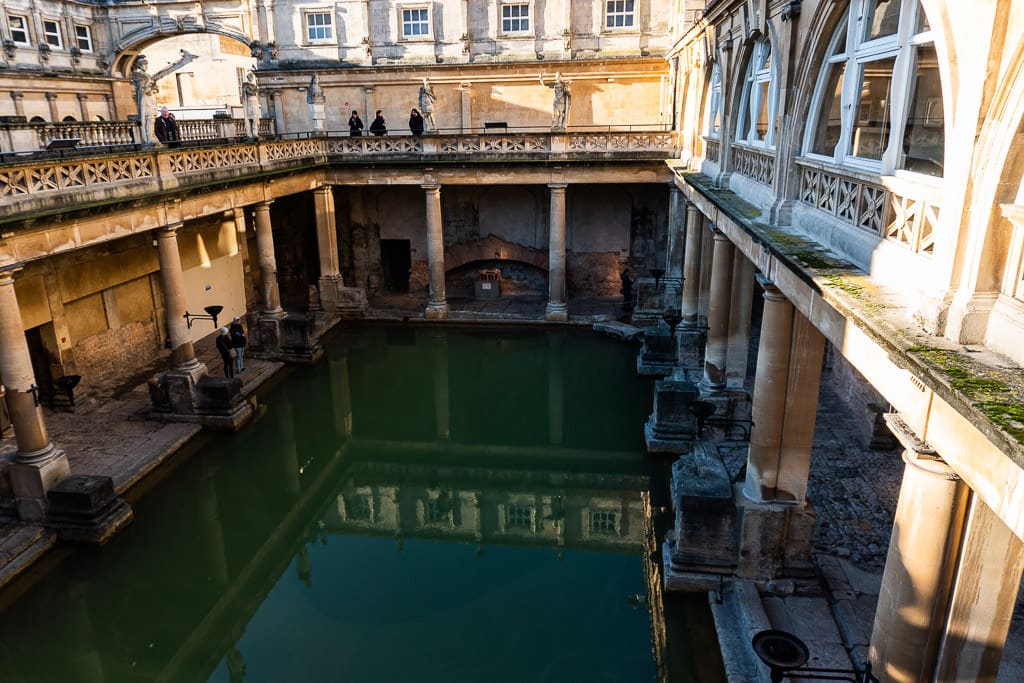
However, the famous Great Bath was our main reason for visiting. So, we enjoyed viewing from the statue-lined terrace above, as well as next to the water below. Our audioguides explained what important Roman leaders were carved into the stone around the terrace and the importance of this bath to the Romans. The area was developed as a sanctuary to promote relaxation, and was originally called ‘ Aquae Sulis.'
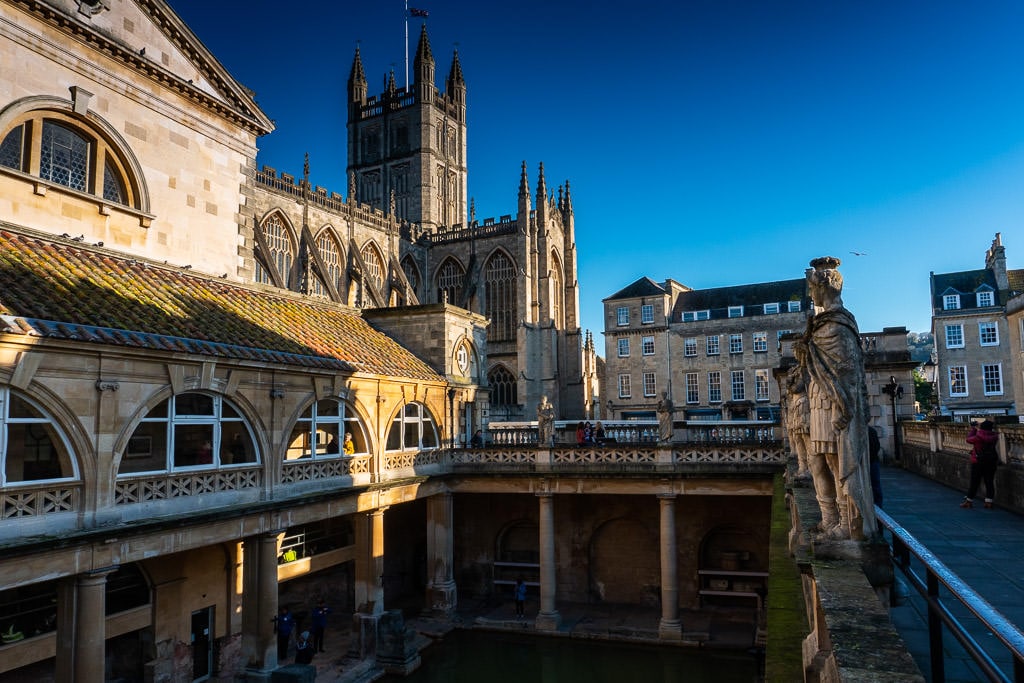
Later, we strolled alongside the steaming waters and imagined what life must have been like on a busy day back in Roman times. We also enjoyed looking at the nearby plunge pool (fun to see how hydrotherapy was used back then!).
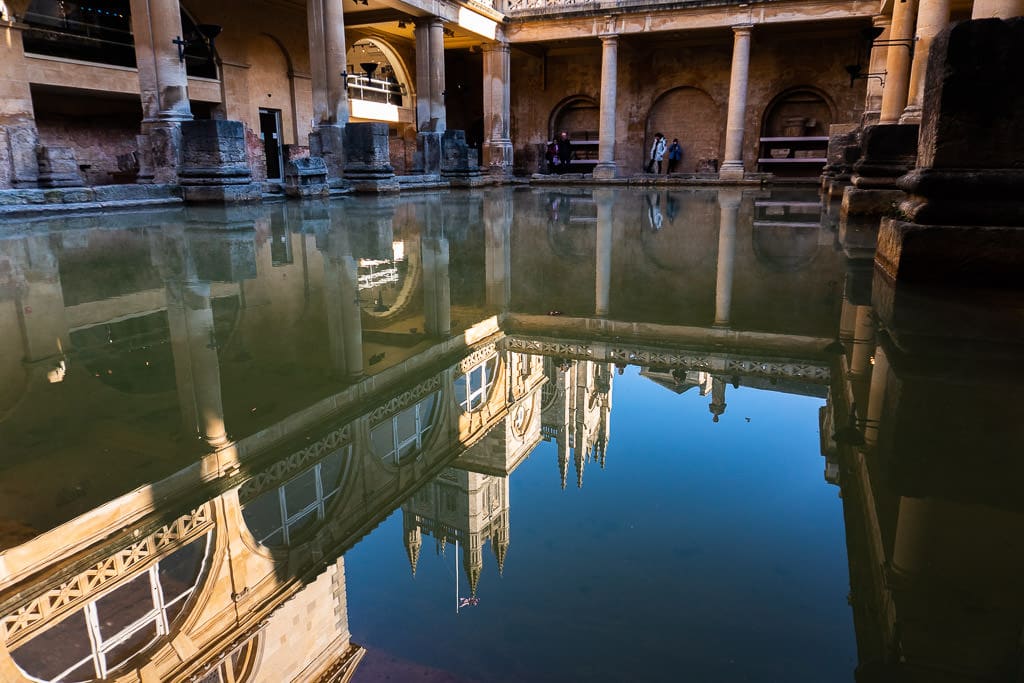
In addition to the famous Great Bath area, we also enjoyed seeing the Sacred Spring, Roman Temple, Roman Bath House, special archeological finds (including the iconic gilt bronze head of the goddess Sulis Minerva), and the spring overflow.
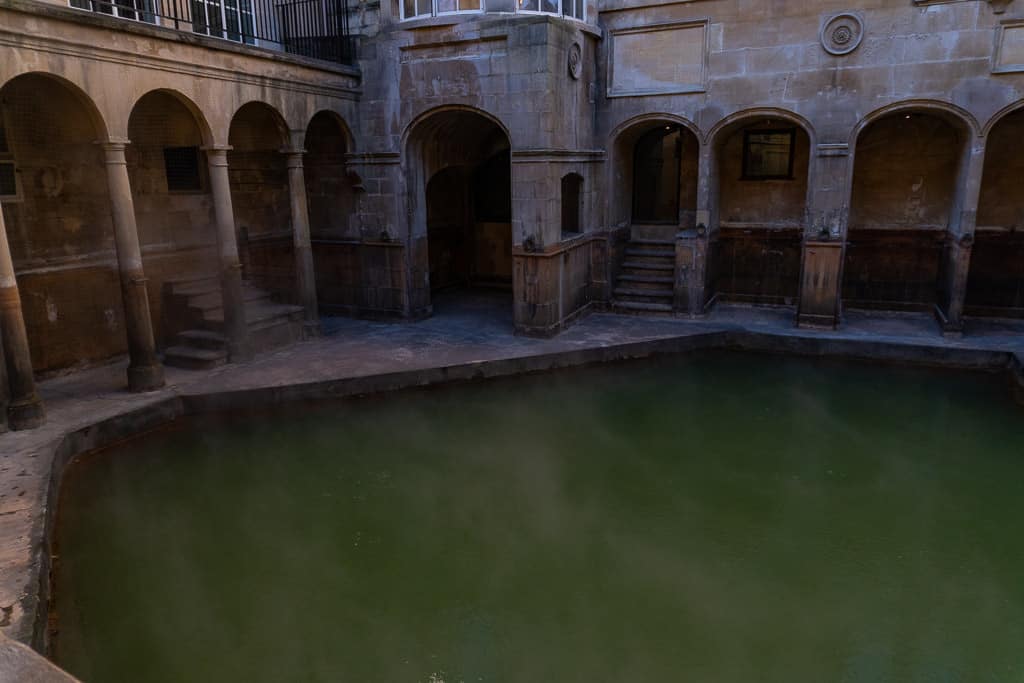
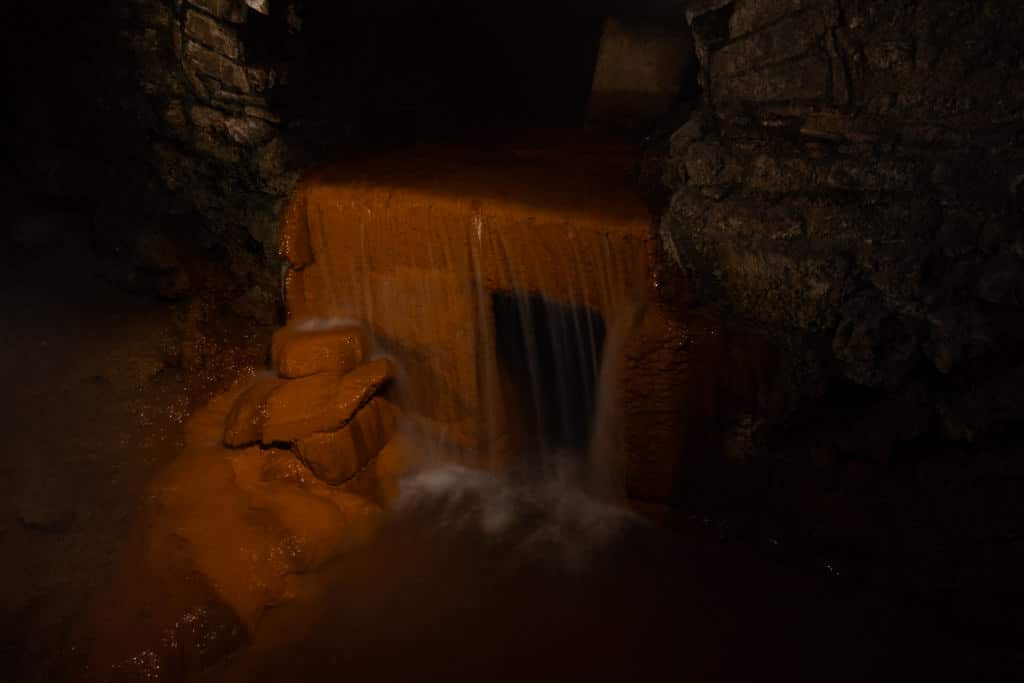
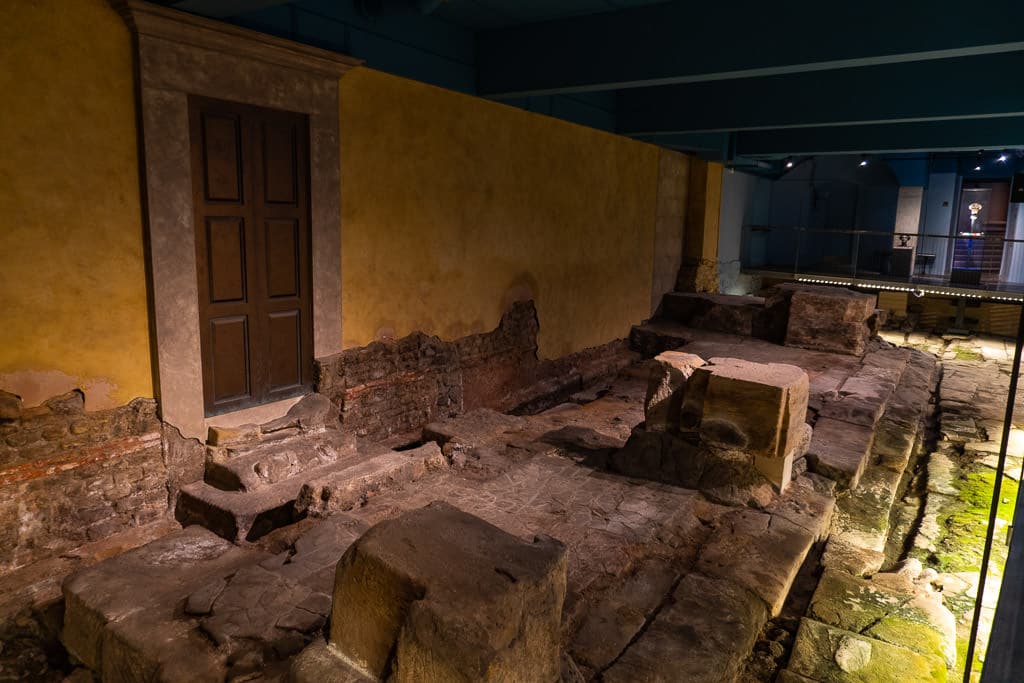
At the end, we sipped the very metal-tasting spring water – known for the healing properties of its 43 minerals … certainly not for being well enjoyed. However, it was all part of the experience, and we really loved this step back in time.
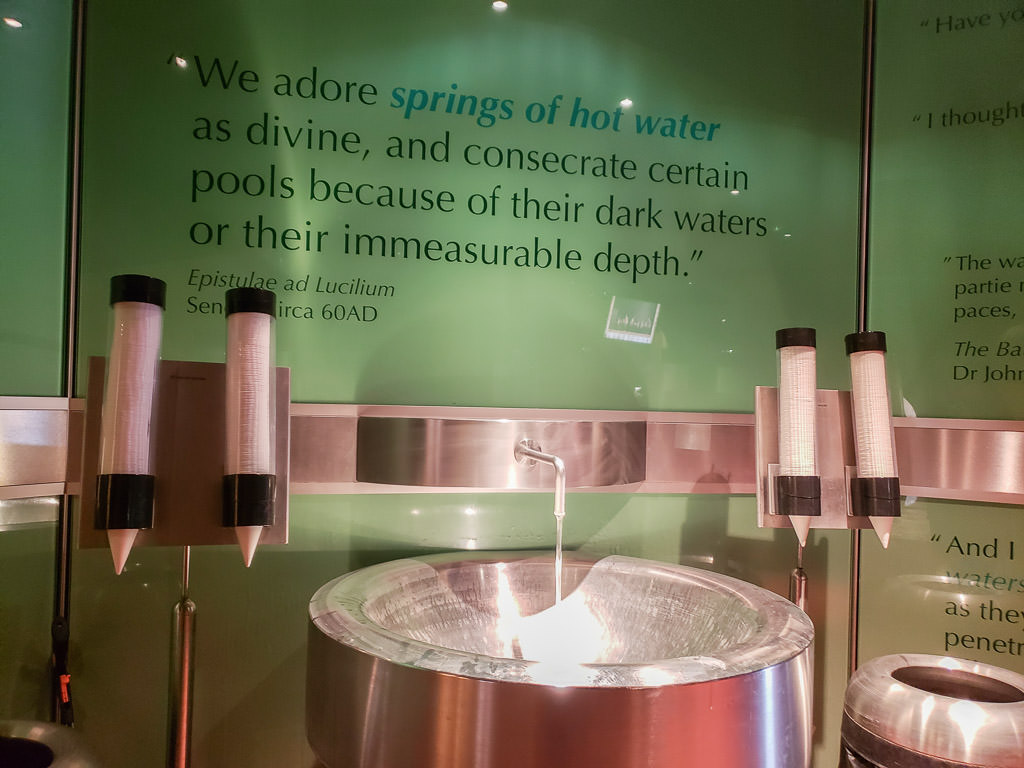
3. Touring Other Historic Places
If time allows, the Jane Austen Centre, Herschel Museum of Astronomy (dedicated to the man who discovered the planet Uranus), Fashion Museum, and Museum of Bath Architecture are other great options – especially if you have a strong interest in any of those topics.
However, there really is no excuse not to make a quick trip to the beautiful and free-to-enter Abbey Church. Depending on the time of day, they may even be having mass.
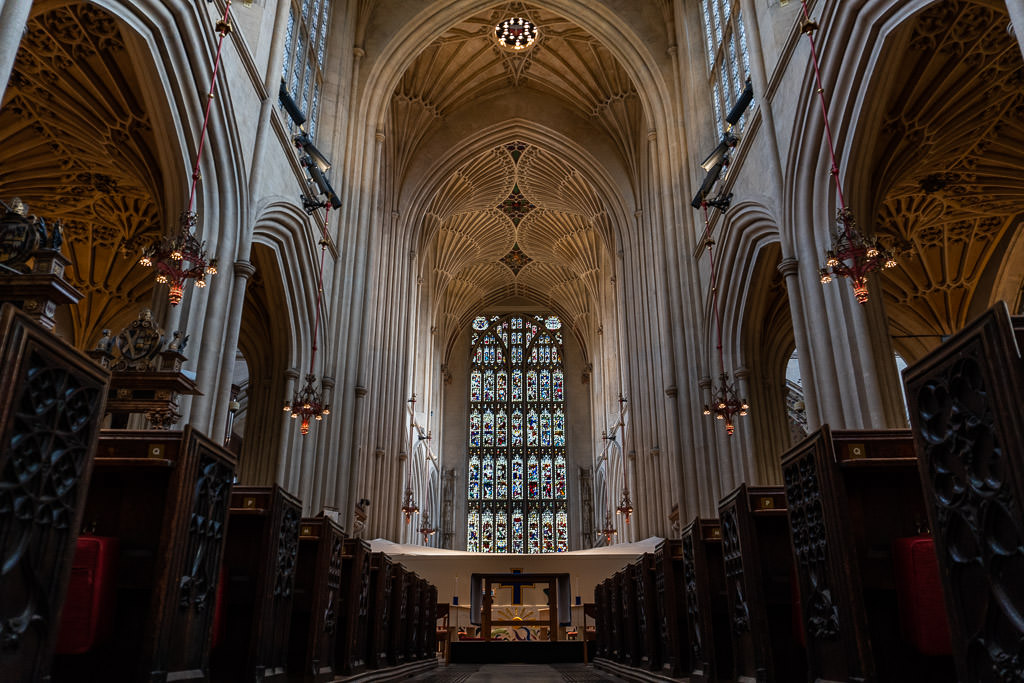
4. Sipping Cider
And, if you are a lover of cider, you are really in luck. Bath is known for its cider. We really enjoyed sampling some of the city's offerings at the Stable while we enjoyed a pizza and pot pie.
Staying at Z Hotel, ended up being a great choice because it was central to everything and they had an awesome happy hour with free wine and snacks!
5. Soaking it All in at Thermae Spa
On the last morning of our trip to Bath, we arrived for our much-anticipated visit to the amazing Thermae Spa. Interestingly, ‘spa' comes from the Latin phrase ‘Salus per Aquam' which means ‘health through water.' This isn't a new trend, it is an age-old method of detox.
These same waters were used by English royalty and many doctors throughout history as a cure for many common diseases. The mix of old and new architecture in the spa buildings is a reminder of the spa city's past.
The standard two-hour spa session is £36 on weekdays and includes the use of a locker, towel, robe, and flip-flops. The smart band you are given at the beginning of your visit locks and unlocks your locker and also works as a form of payment at the cafe.
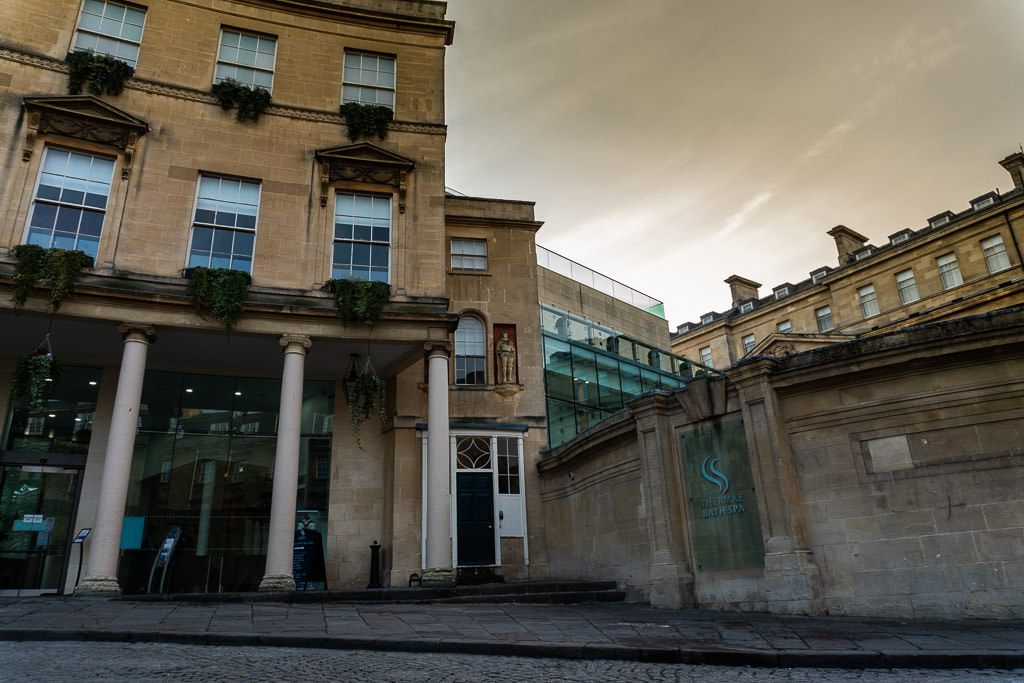
The locker rooms are co-ed with private changing and shower rooms, as well as open areas. This was a first for us but didn't bother us at all. Everyone seemed to stay in their own private area and it was easier to just come and go together.
While we chose to spend our time in the main Royal Bath area, the historic and unique Cross Bath across from the main building is another great option – especially for special occasions, since it can be rented out for private use. And of course, the spa has plenty of special treatments and packages available as well.
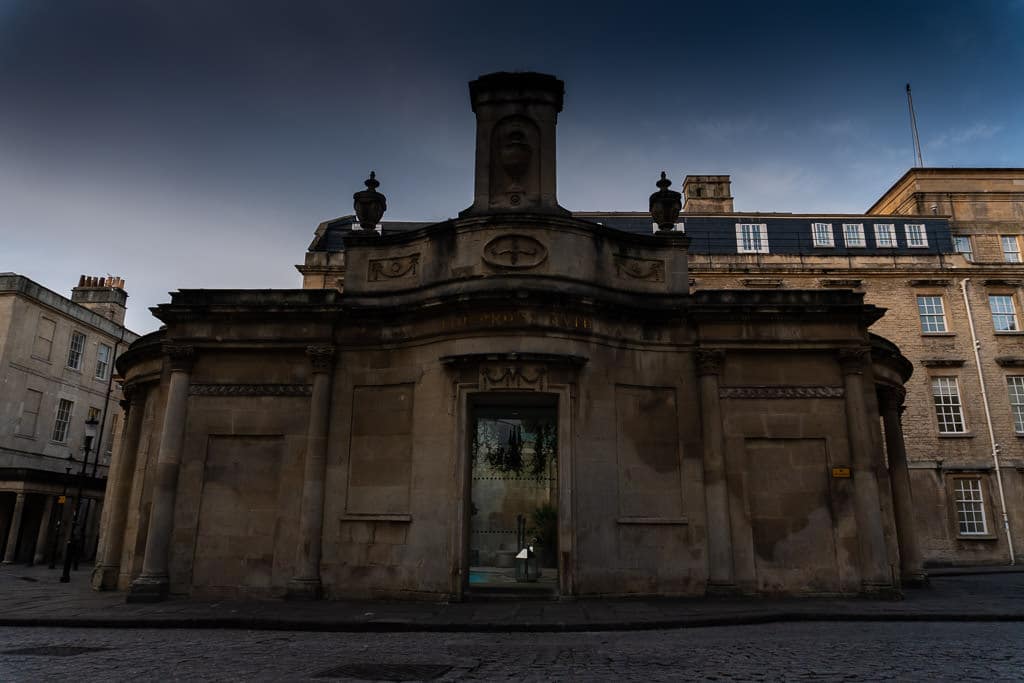
Cross Bath
As part of our visit, we were able to arrange a short tour of the property which also allowed us to take photos (since cameras are usually not allowed). Of all the places we were introduced to, the 18th-century Cross Bath stood out the most. This small open-air bathing area actually has a fountain with water from the sacred Cross Spring flowing from it. The natural spring water here is actually the only hot mineral water in the UK. Such a historic and romantic addition to any visit.
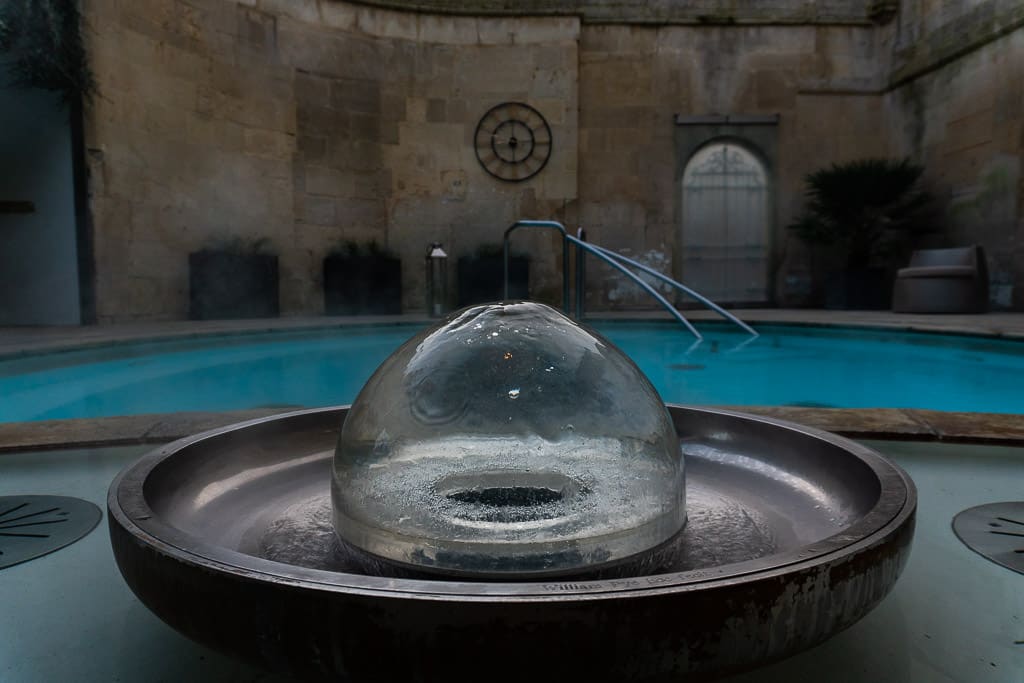
Open-Air Rooftop Pool
Although a private dip in the Cross Spring was tempting, the roof-top soaking area was actually what we were looking forward to the most. Those city views were calling our name and this relaxing place to take in the city did not disappoint. We took turns under the high-pressure waterfall and lounged next to the jets in this giant pool fed by the spring we had seen earlier.
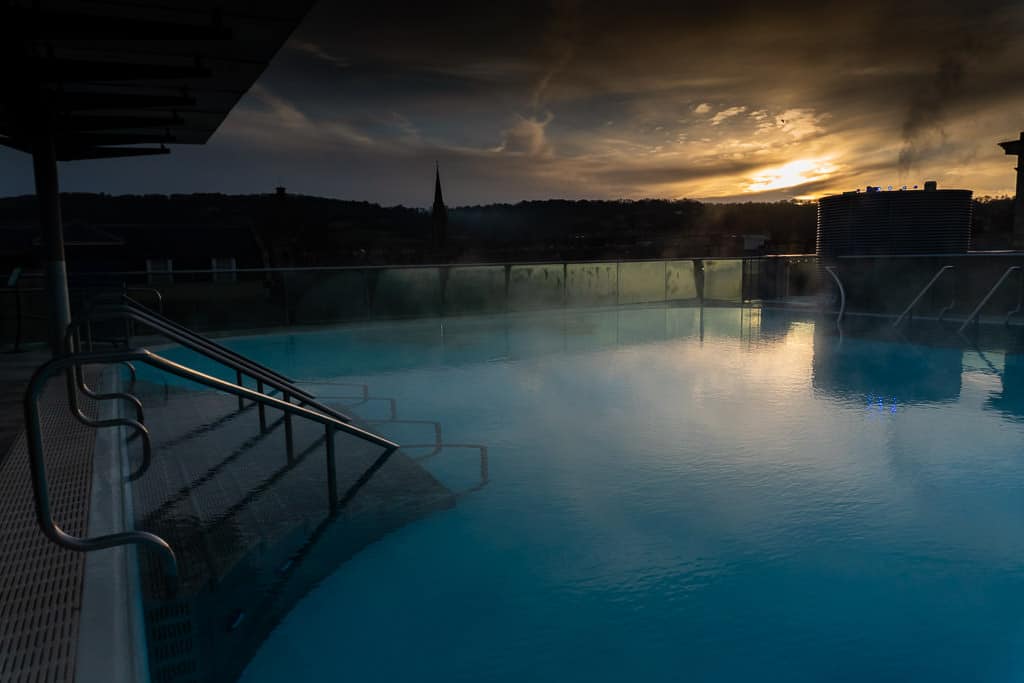
However, we were thankful for the tip to start our spa session here, so we only had to take the cold walk from the pool once in wet bathing suits.
Wellness Suite
Although it was closed for renovation during our visit, we were allowed to peak into this gorgeous area of the spa and it really impressed us. Each area is dedicated to an important part of Bath's past – including the face of the Roman goddess Minerva and a celestial room dedicated to the famous astronomer from the city. 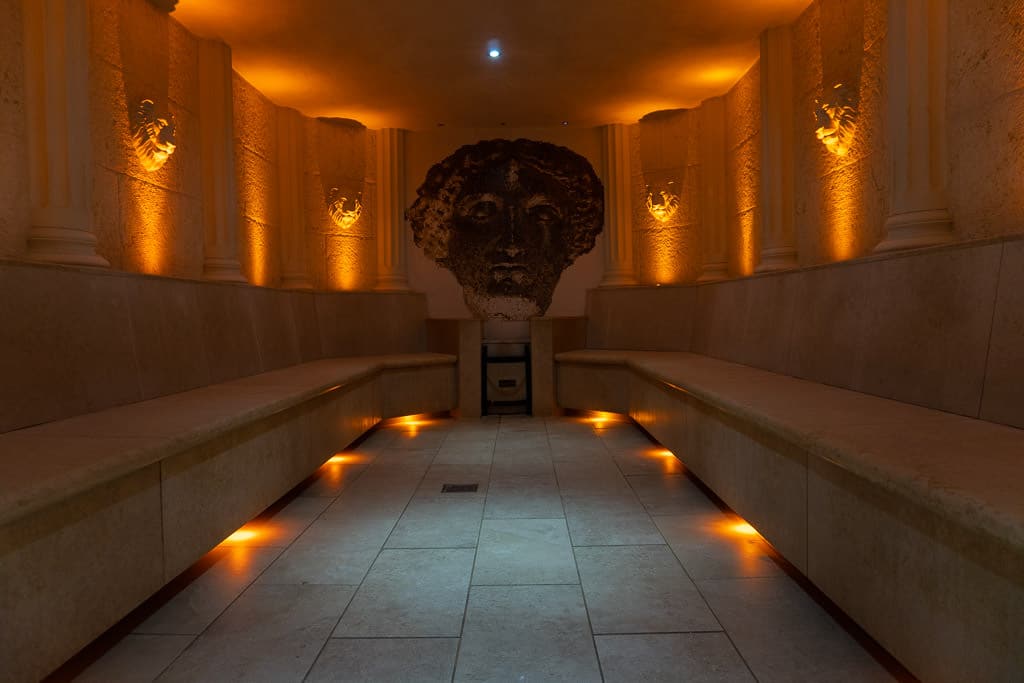
The wellness suite has both Roman and Georgian steam rooms, ‘experience' showers, an ice chamber, infrared room, and of course, out-of-this-world relaxation room. There is also a cafe on the same floor with a full menu of great meals and drinks.

Minerva Bath
At the end of our visit, we floated around the serene Minerva Bath on the bottom level before showering and heading back to check out of our hotel. I wasn't sure if visiting the spa as our final activity would be the best timing, but it turned out to be perfect. Getting to spend some quiet, relaxing time in those waters was a great way to let everything we had experienced during our trip soak in.
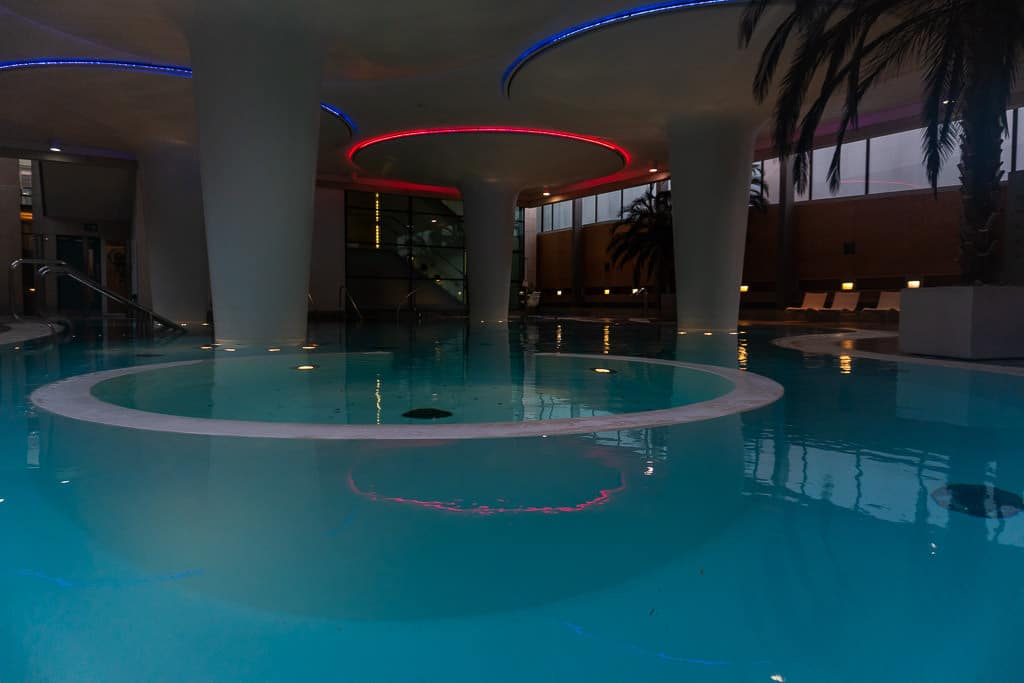
But, there really isn't a bad time to experience the historic waters or walkways of Bath. What a city!
Many thanks to Visit Bath and Thermae Spa for providing us with complimentary passes during our visit. As always, all opinions are our own.
Read more about our Europe travels here. And to learn how we traveled in Europe for five months on a budget by house sitting, read this guide.

